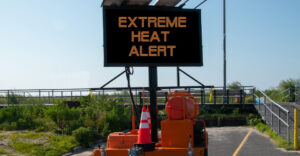 Who Is At Greater Risk of Heat Illness?
Who Is At Greater Risk of Heat Illness?
Infants and young children up to 4 years of age
Older adults aged 65 and older
People who work in a humid environment or do outdoor work or exercise (e.g. athletes, military personnel, workers who wear protective clothing like firefighters, etc.)
People who are overweight or have existing medical conditions (e.g. diabetes or heart disease)
Low-income and socially isolated individuals
How to Prevent a Heat Related Emergency
For those exposed to hot temperatures, preventing heat-related emergencies can be achieved with three very simple actions early on: water, rest and shade.
Drinking plenty of fluids and resting from the heat in shady areas are some of the best ways to prevent heat illness.
Other protective measures include wearing sunscreen and appropriate clothing (choose lightweight, loose-fitting clothing in light colors) and staying in an air-conditioned place as much as possible. Public spaces, such as a shopping mall, public library or movie theater, are great places to escape to if you don’t have air conditioning at home.
It’s best to schedule the heaviest workload and other outdoor activities when it’s the coolest, such as the early morning and evening. If possible, rotate tasks among workers to help minimize overexertion and heat exposure.


Leave a Reply